Alexander Shulgin
Ann Shulgin And Her Contributions to the World of Psychedelics
Published
2 years agoon
By
admin
The name Alexander Shulgin is recognizable in the world of psychedelics. As a cutting-edge researcher in the mid-to-late 1900’s, he has the designation of bringing MDMA to psychotherapy. But it wasn’t just the man alone who made great strides in this world; his wife was right beside him. Ann Shulgin was a woman before her time, and her contributions to the world of psychedelics understanding are in tandem with her husband’s. For this year’s Women’s History Month, let’s pay some attention to this pioneer of psychedelic therapy.
First, a little on hubby Alexander Shulgin
Truth is, the name Ann Shulgin wouldn’t be known if not for her more famous husband, Alexander Shulgin; who is credited as a chemist, pharmacologist, psychopharmacologist, and author. His own experiences with psychedelics including mescaline, led him in the direction of psychopharmacology. Though he started out at Harvard at the tender age of 16, he dropped out to join the navy, and returned to the University of California where he earned a PhD in biochemistry, and did post-doctoral work in psychiatry and pharmacology.
When working for the Dow Chemical company in the early 60’s, he developed the first ever biodegradable pesticide called Zectran. This earned him both money, and the ability to further his own research interests, while still working at Dow. He created and patented drugs for Dow, and in his spare time, he wrote articles for publication in journals about other drugs.
Following this he studied neurology at UC San Francisco’s medical school, but left for his own consulting work. He built a lab at home dubbed ‘the Farm’, where he worked as a consultant, and was also an instructor at universities, and the San Francisco General Hospital. He made a connection with the DEA through a friend, and held seminars on pharmacology for the workers there; even giving the organization new drugs. He received awards from the agency upon publication of a reference book for law enforcement on controlled substances.
Hello, cool that you’re here. Sign yourself up to the Cannadelics Weekly Newsletter for email updates; and for a range of promos on cannabis flowers, vapes & smoking devices, edibles, cannabinoid compounds (delta-8, HHC), amanita mushroom products, and too much more to name. Come, find your favorite way of feeling good!
Shulgin then got a DEA Schedule I license to run an analytical laboratory, which enabled him to work with Schedule I psychoactive compounds; and to synthesize any new drug. In 1976 Shulgin did what he is most known for, found a new way to synthesize the drug MDMA, which had already been synthesized back in 1912 by pharma company Merck.
He passed it on to psychotherapist friends, who began using it in their practices. Particularly psychologist Leo Zeff, who subsequently passed on the drug to many other therapists. One was Ann Gotlieb, a lay therapist (basically, a therapist without formal training), who went on to become Ann Shulgin upon her marriage to Alexander in 1981 (they met in 1978).
Prior to re-synthesizing MDMA, Shulgin worked with friends to create a rating scale for ranking and describing the effects of different drugs; mainly done through self-experimentation of the group. Through this they established the Shulgin Rating Scale, which enabled descriptions for the visual, auditory and physical sensations that came with different compounds. Much of this work centered on phenethylamines, which include MDMA and mescaline; and tryptamines including DMT and psilocybin from magic mushrooms. One of the more popular drugs he invented, is 2C-B.
Despite his previous relationship with the DEA, in 1994 his lab was raided, and he was made to turn over his license due to allegations of violating it. This came with $25,000 in fines for having samples meant for quality testing. The raid came two years after he published the book PiHKAL (Phenethylamines I’ve Known and Loved) which the DEA stated acted like a recipe book for illicit drug manufacture.
Ann Shulgin – The woman behind the man
Alexander Shulgin is a well known name, and for good reason. He accomplished so much in his lifetime, and contributed so much to our understanding. Some of which he’s only getting credit for now, as laws against psychedelics loosen all over the place. But much of it, he didn’t do alone, and his wife Ann Shulgin played a strong role in everything that went on from the late 70’s and onward.
Ann was not trained like Alexander with tons of science degrees. Instead she started out as an artist. She worked as a lay therapist, and also used drugs like MDMA and 2C-B, when the drugs were still legally available for therapeutic use. She worked as a writer, documenting in detail the drugs, often from a Jungian perspective of psychoanalysis. She also spoke about their concomitant use with hypnotherapy. She was a speaker on these subjects, and was a strong supporter for the use of psychedelic medications.
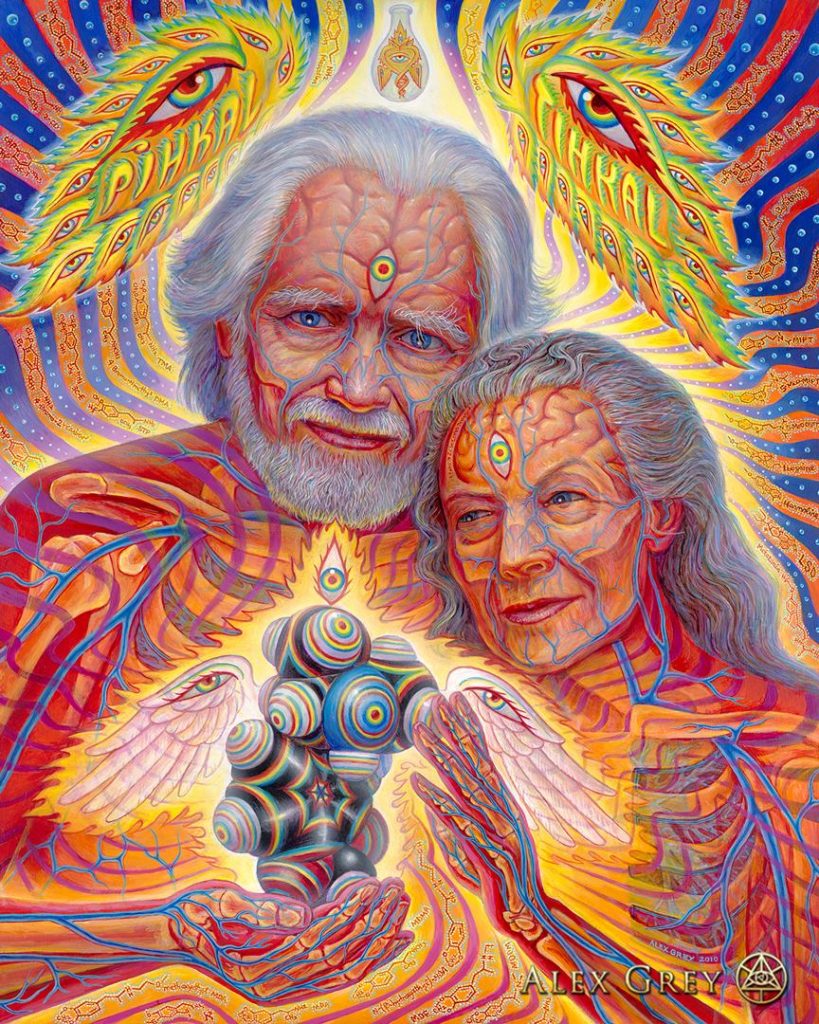
She was also a co-author for the previously mentioned book PiHKAL which was a positive and negative in her husband’s career, as well as a similar book called TiHKAL (Tryptamines I have Known and Loved), which was published after. She helped her husband with the Shulgin Rating Scale too, and made contributions to the following books:
“Thanatos to Eros: 35 Years of Psychedelic Exploration; Entheogens and the Future of Religion; Ecstasy: The Complete Guide; The Secret Chief Revealed; Higher Wisdom: Eminent Elders Explore the Continuing Impact of Psychedelics; and Manifesting Minds: A Review of Psychedelics in Science, Medicine, Sex, and Spirituality.”
Of her relationship with her husband, she once stated in a 2014 article in the Associated Press: “He was the scientist, and I was the psychologist. He was a genius.” Of her, her daughter Wendy Tucker explained, “She was always the one who people talk to and you always felt like you could open up to her. She called herself a lay therapist.”
Of her own first experiences with psychedelics in her 20’s, Ann wrote this in PiHKAL: “I saw something forming in the air, slightly above the level of my head. I thought that it was perhaps a few feet from me, then I realized I couldn’t actually locate it in space at all. It was a moving spiral opening, up there in the cool air, and I knew it was a doorway to the other side of existence, that I could step through it if I wished to be finished with this particular life I was living, and that there was nothing threatening or menacing about it; in fact, it was completely friendly.
I also knew that I had no intention of stepping through it because there was still a great deal I wanted to do in my life, and I intended to live long enough to get it all done. The lovely spiral door didn’t beckon; it was just matter-of-factly there.”
Other accomplishments
It wasn’t always easy to publish their works, so in a determined way, the couple began their own publishing company in 1991 under the name Transform Press. This was how they published PiHKAL: A Chemical Love Story. After the DEA raid, they both decided to stay away from already banned drugs, and focused more on new compounds. This spawned the subsequent book TiHKAL: The Continuation in 1997.
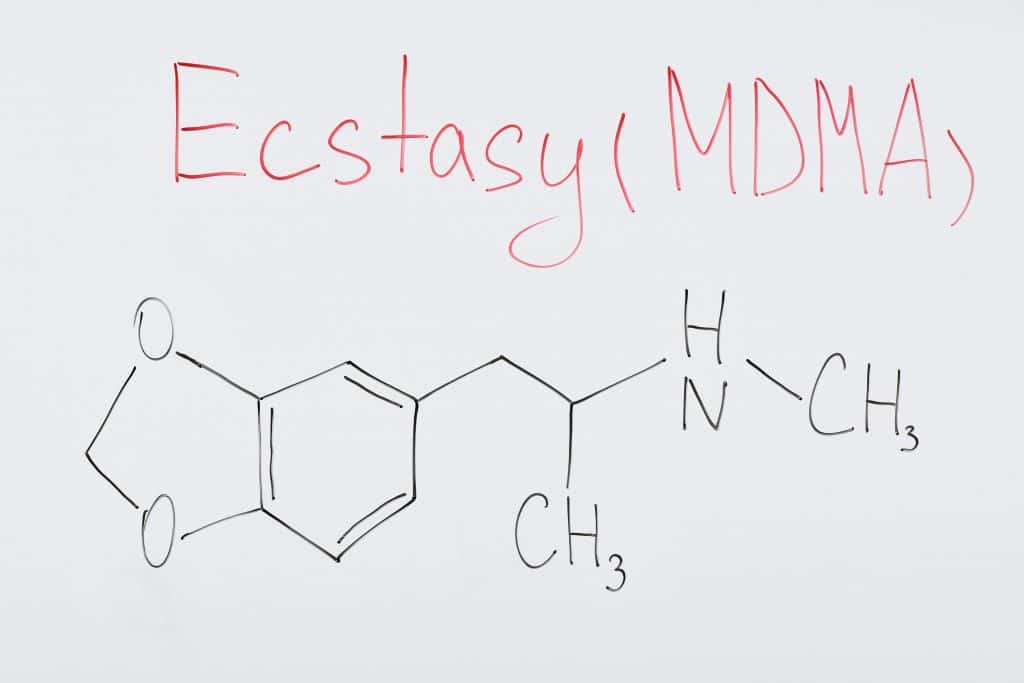
One of the interesting things about Ann, was her lack of university education, but mastery of psychological concepts. A ‘lay therapist’ means she had no formal training, but was able to successfully work in the field regardless. One of her frequently spoken about subjects of interest, was the belief in our ‘shadow’ selves; the frightening parts of ourselves within, which are often subconscious or repressed.
Her view was that MDMA and similar drugs could help people with self-love and self-acceptance. In her words, “The magic of MDMA is that it allows you to see who you are without self-rejection. It gives you insight into yourself and is especially good for PTSD.” Her views on MDMA and PTSD have expanded out over the years, and have helped drive legalization measures. Including Colorado’s recent pre-emptive legalization of the drug, partly based on testimony from soldiers with PTSD.
Said tucker of this: “They were the ones pushing to do all the PTSD work with veterans with MDMA because they saw people who had severe trauma could really break through. They were so brave to publish their work because that really opened the door and paved the way to all that is happening now.” She added, “We lost years and years of research ability because of the attitude and fears around psychedelics. But we wouldn’t be where we are if it wasn’t for Ann and Sasha.”
She was also a strong supporter of MDMA’s use in couple’s therapy, saying its a great and useful tool to support communication and to get through relationship issues. Besides her use of shadow integration, she was known for promoting the spiritual aspect of the drug, and how it brings on feelings of unity and the divine nature of the world around. As a note, both Alexander and Ann fully supported use of drugs like MDMA in this way, but were 100% against their use as recreational drugs.
Conclusion
A decade ago, the work of Alexander and Ann Shulgin was still rather suppressed. These days, as psychedelics and their medical values get more attention, so do the Shulgins. Much of what we know today comes from their groundbreaking research; and even now we’re only just re-finding, what they discovered years ago.
Ann Shulgin is a role-model not only for the work she did, but in being one of the first female pioneers of such drug topics. We thank both Shulgins for there incredible work, which was done even under the stress and pressure of government resistance.
Welcome readers! Thanks for being a part of Cannadelics.com; where we work hard to bring you independent and comprehensive coverage of the cannabis and psychedelics spaces. Head our way frequently to keep informed on important stories; and subscribe to our Cannadelics Weekly Newsletter, so you’re never late to get the news.
Related
You may like
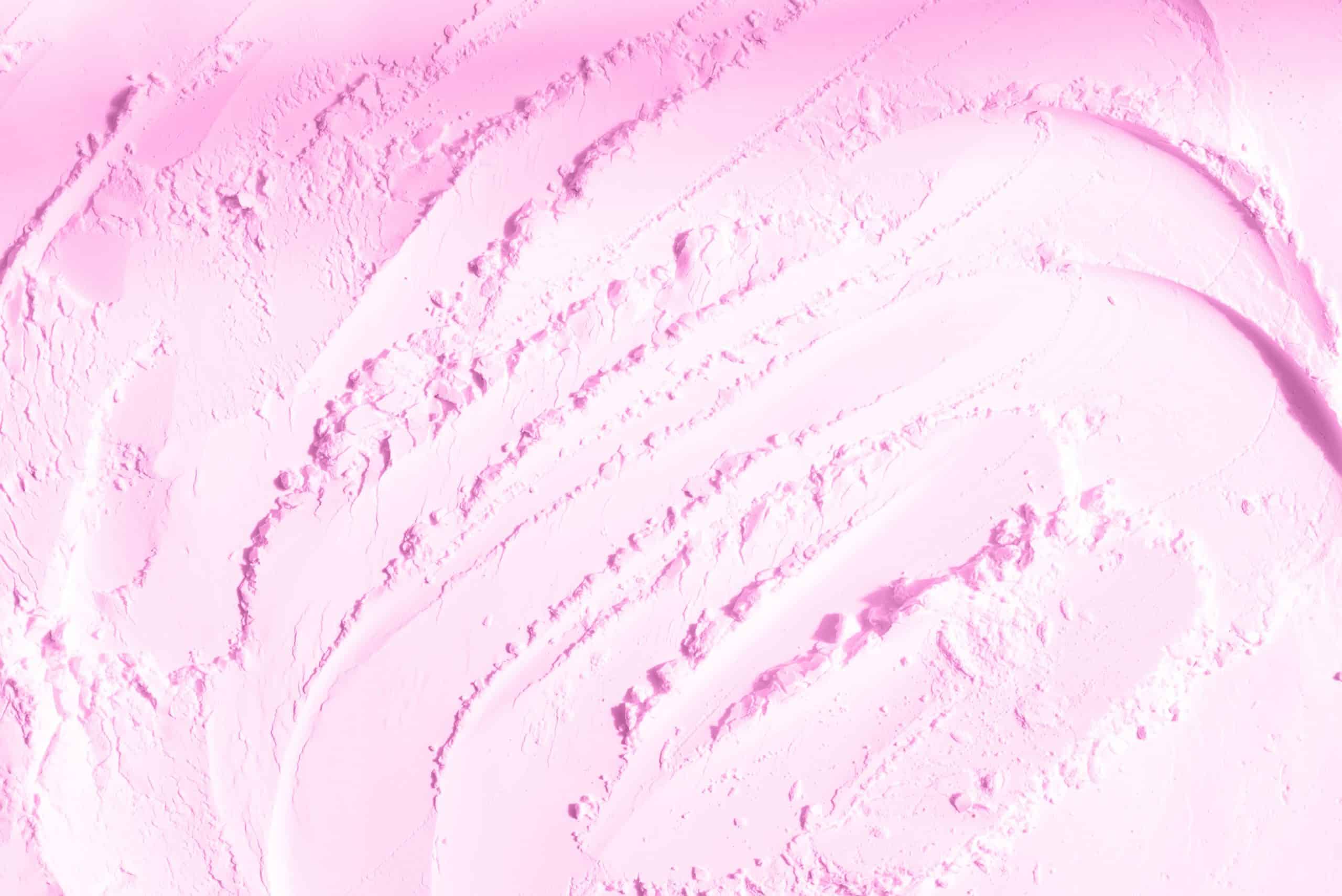
Heroin, cocaine, LSD, weed…we know these drugs. Even the lesser used drugs we know, like mescaline, 2C-B, and salvia. But then, there’s always something new popping up. From captagon taking over the Middle East to gas station heroin – a tricyclic anti-depressant sold in corner stores in America; people sure want to get high on something. What’s one of the latest to surface? Pink cocaine, the new rage of South America, and beyond.
Pink cocaine, what’s that?
The answer to that depends on who you ask. Though the main point of differentiation in answers, is concerning what specific ingredients are in it. The first thing to know, though, is that no, pink cocaine is not real cocaine; and in fact has nothing to do with that euphoria-bringing, stimulant drug.
Pink cocaine started as nothing more than a pink version of one of the drugs mentioned above, 2C-B. 2C-B was created in 1974 by Alexander Shulgin, the same guy who brought us MDMA, with a new method to synthesize it in 1976. He wrote about both in his book PiHKAL: A Chemical Love Story. PiHKAL stands for ‘Phenethylamines I Have Known and Loved.’ 2C-B is a phenethylamines drug, which means its a central nervous system stimulant.
2C-B is similar to mescaline, and was used in the mid-late 1900’s when psychedelics were legal for therapeutic use. It comes as a white powder, or as tablets, and is generally taken by mouth. It can also be vaped, and snorted (insufflation). It’s a Schedule I drug in the US.
Cool that you made it over. Get all updates by subscribing to the Cannadelics Weekly Newsletter; which also gets you a range of deals on cannabis flowers, vapes & other smoking devices, edibles, cannabinoid products (like HHC), amanita mushroom products, and so much other stuff. Come get the good stuff here!
In the 1970’s the drug was manufactured by German pharma company Drittewelle, and sold under the brand name “Erox”. It was also found at that time under the names “Nexus” and “B-Dub”. When MDMA was illegalized in 1985, 2C-B became a short-lived replacement; and its now often sold as ecstasy, though its not the same thing. When it was first marketed, it was done so as an aphrodisiac, as it does have stimulating and entactogen properties, like ecstasy. Much like MDMA and ecstasy, its recreational use has related largely to the rave scene.
So what’s pink cocaine? According to many sources it’s merely a dyed pink version of 2C-B. Why? Well, perhaps switching up the aesthetic makes people think they’re trying something new and different. Both the worlds of drugs and marketing tell us that people like to try new things, and that the thing that looks ‘cool’ is often the one desired. It goes by different slang names that come from ‘2C-B’, like ‘tucibi’, or ‘tuci’, or ‘tussi’.
Is there another definition for pink cocaine?
So, that’s what it is? Just a pink form of a drug we already knew about? Not exactly. Much like MDMA and ecstasy, things can start going off the mark. The names ‘MDMA’ and ‘ecstasy’ are often used interchangeably; and truth be told, they can technically refer to the same thing: the pure version of MDMA.
More often than not however, while ‘MDMA’ does refer to a pure form, ‘ecstasy’ often refers to a cut version. As in, a lesser quality version that has other compounds in it so the dealer’s batch goes farther, or to make it more powerful to impress clients and keep them coming back.
Think about cocaine. Sure, you can get really pure stuff. But a lot of it isn’t. It’s known to be cut with baby laxatives, boric acid, detergent, aspirin, creatine, and meat tenderizers. It can also have caffeine or amphetamine to increase the intensity. Or drugs like Benzocaine and Lidocaine, which are for pain. The same idea goes for pink cocaine.
While it was originally 2C-B, these days sources say the drug is made from ingredients like ketamine, MDMA, and caffeine, among other compounds. Some versions may include opioids like fentanyl, meth, or amphetamine, as well. The names ‘tucibi’, ‘tuci’, and ‘tussi’ tend to refer more to this drug, and not straight 2C-B, as 2C-B is so infrequently in the concoction anymore. But it used to be.
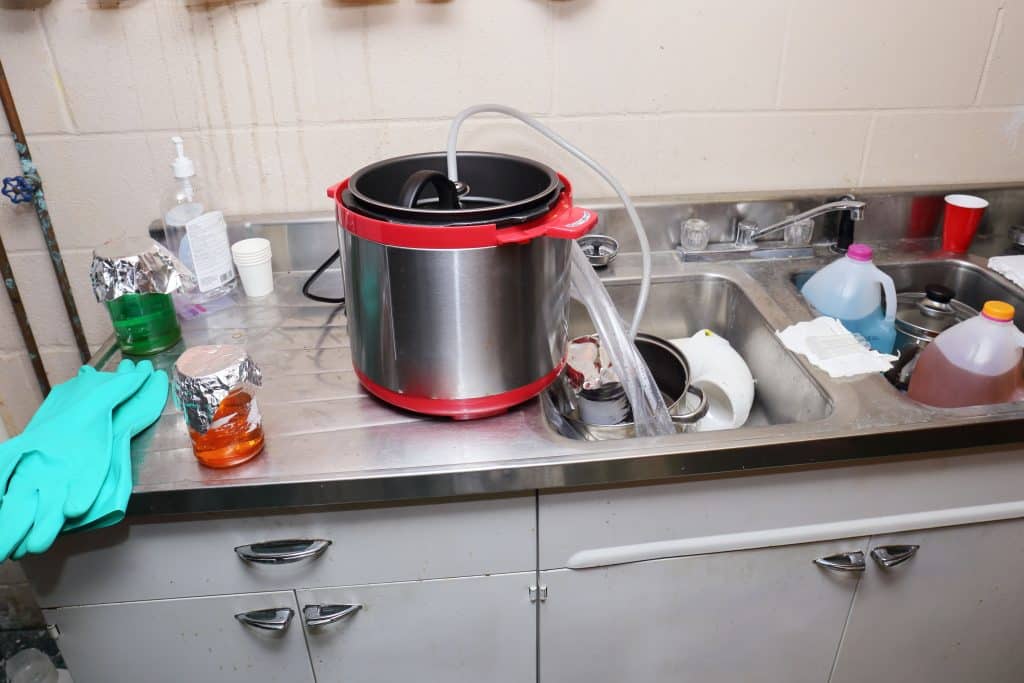
The origin of pink cocaine
So where did the stuff come from, and when did it make its way to the public eye? It first became big – like it’s namesake – in Colombia, around 2010. Back then it generally did contain 2C-B. It made its way to Colombia not from the States, but from Europe, where it was already a niche but staple drug in the nightclub scene. The rich of Medellin were some of the first to get the drug back to Colombia, where its use proliferated.
It was seen at that time as a more elite drug than the ever-visible cocaine, probably because it was first big among the upper class. It came with a higher price tag than cocaine, which was used more by middle and lower classes. At a certain point early on, it was mixed with pink dye that smelled of strawberries. This helped make it more appealing in general, as it was thought of as harsh and bad-tasting.
2C-B wasn’t in great supply though. It was only a niche drug in Europe, and only small amounts made it to Colombia. This encouraged local vendors to make their own versions; and hence, the birth of the pink cocaine that’s sold today, (which often has little-to-no 2C-B in it at all), was born. In fact, actual 2C-B is still not common in Latin America.
Pink cocaine going international
In the next couple years, pink cocaine made its way around Colombia. In mid-2015, it was found through an arrest of multiple traffickers, that the drug was being exported to countries like the US, Panama, Ecuador, Peru and Chile. Around this time it was established by manufacturers that they could use all sorts of ingredients as long as they maintained the look and smell of it, since that’s what the public associated with the 2C-B version. This made it quicker and cheaper to make, lowered prices, and increased exports.
By 2016 it had gotten back to Europe, which is kind of funny in that it was from Europe that the original drug came; and just a few years later, the same area was importing back the weakened, fake version. That year Spain captured nine operators who ran refining labs in Madrid. The labs were creating the drug with ketamine, cocaine, and meth. There is no standard recipe, and individual producers are known for creating their own individual concoctions.
Spain is pretty into it, with reports surfacing late last year that seven were arrested for selling both cocaine and pink cocaine in Madrid and Malaga. When their homes were searched, eight kilos of the pink drug were found. Prior to this, in late August, a bust of Brits in Ibiza, Spain turned up 13 kilos of pink cocaine, thought to have a street value of €2.3 million.
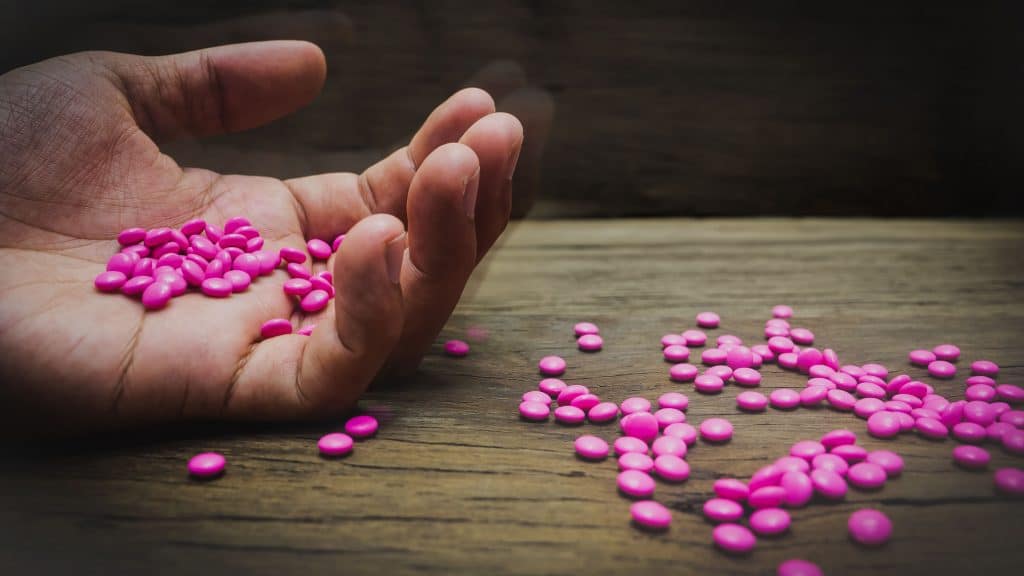
A UN report from late 2022 speaks of some form of the drug being found by law enforcement in the following countries: Austria, Spain, Switzerland and the UK. This was confirmed by Trevor Shine, the director of TICTAC Communications Ltd, a UK organization which identifies and gives information on drugs. He said that the organization “had come across a small number of samples of pink powder or crystals over the last two years,” which “contained MDMA and ketamine, and another caffeine and ketamine.”
He did point out that these findings account for only a tiny fraction of the drugs found, in the neighborhood of 0.5% of tested samples. It’s still generally new there, but in Colombia, where its been around longer, these pink concoctions are significantly more popular.
Though the drug is in Europe, it biggest base is in Latin American countries like Chile, Argentina, Uruguay, Panama, Mexico, Costa Rica, Venezuela, Peru, Bolivia, and Paraguay. As the price plummeted along with the quality, it now attracts a much less rich crowd, with the former users moving on to other drugs.
While 2C-B, like other hallucinogens, isn’t known to cause death, Senior Research Officer of the UK’s Drugs Science (a policy charity) reminds that, like it or not, there are a lot of crazy things out there, and some kind of testing is becoming more and more necessary for recreational users:
“Mixing drugs can be dangerous. For example, mixing two depressant drugs like alcohol and benzos is particularly risky as this can drastically slow down breathing and heart rate. It is good practice for people who may mix drugs to use tools such as TripSit to get some insights into particularly risky interactions. There’s also the ongoing risk that people don’t know what’s in their drugs – this is why we need drug checking services such as the Loop so people can make informed choices.”
Conclusion
Perhaps the biggest takeaway of pink cocaine is that if you want a quality drug, you’ll probably have to pay more. The cutting, cheapening, and replacing of pure compounds leads to low-level drugs, and more danger. Maybe 2C-B is fine, but do you have the slightest clue what’s in your pink cocaine?
Welcome all! Thank you for joining us today at Cannadelics.com; a news source that focuses on coverage of the growing cannabis and psychedelics fields. Come around often to stay up on all important stories; and check out the Cannadelics Weekly Newsletter, so you’re never late to get the news.
Related

Getting THC Edibles in Your Edible Arrangement?

Is Cannabis Legal in California Right Now?

Germany: Trial against operator of Trier cannabis vending machine discontinued

The best energizing THC gummies of 2025 by Leafly

Mixed Messages From The Feds About Cannabis

Humboldt County extends deadline to pay marijuana cultivation taxes

How Hemp Helps You Sleep

420 in Texas is at Reggie & Dro

Daily Cannabis Use Can Help People Get Off Opioids (STUDY)

The Future of Cannabis and Sleep Medicine

Distressed Cannabis Business Takeaways – Canna Law Blog™

United States: Alex Malyshev And Melinda Fellner Discuss The Intersection Of Tax And Cannabis In New Video Series – Part VI: Licensing (Video)

What you Need to Know

Drug Testing for Marijuana – The Joint Blog

NCIA Write About Their Equity Scholarship Program

It has been a wild news week – here’s how CBD and weed can help you relax

Cannabis, alcohol firm SNDL loses CA$372.4 million in 2022

A new April 20 cannabis contest includes a $40,000 purse

Your Go-To Source for Cannabis Logos and Designs

UArizona launches online cannabis compliance online course
Trending
-

 Cannabis News2 years ago
Cannabis News2 years agoDistressed Cannabis Business Takeaways – Canna Law Blog™
-

 One-Hit Wonders2 years ago
One-Hit Wonders2 years agoUnited States: Alex Malyshev And Melinda Fellner Discuss The Intersection Of Tax And Cannabis In New Video Series – Part VI: Licensing (Video)
-

 Cannabis 1012 years ago
Cannabis 1012 years agoWhat you Need to Know
-

 drug testing1 year ago
drug testing1 year agoDrug Testing for Marijuana – The Joint Blog
-

 Education2 years ago
Education2 years agoNCIA Write About Their Equity Scholarship Program
-

 Cannabis2 years ago
Cannabis2 years agoIt has been a wild news week – here’s how CBD and weed can help you relax
-

 Marijuana Business Daily2 years ago
Marijuana Business Daily2 years agoCannabis, alcohol firm SNDL loses CA$372.4 million in 2022
-

 California2 years ago
California2 years agoA new April 20 cannabis contest includes a $40,000 purse



